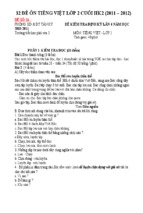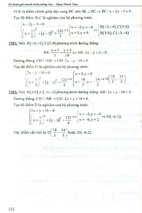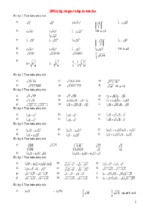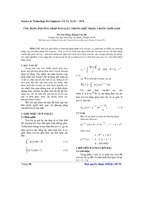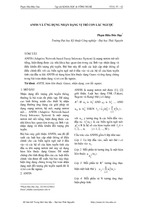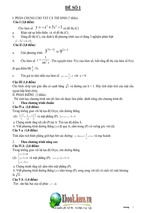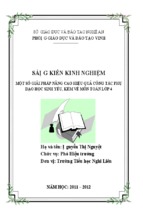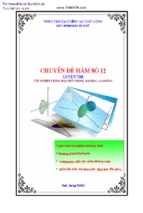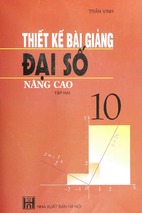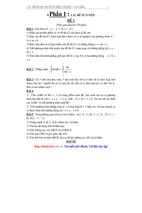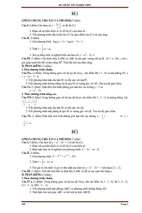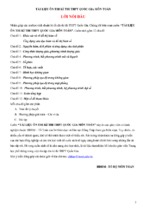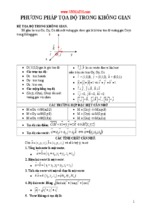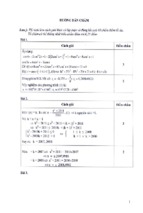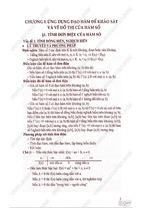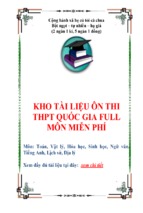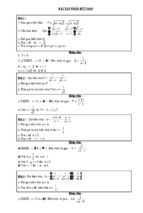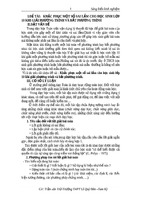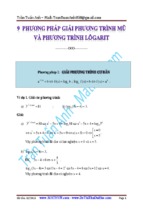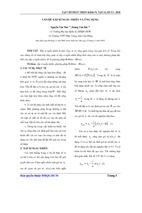193
Contributor Pro�les:
John G. Heuver
John G. Heuver was born in 1934 in Olst, the
Netherlands where he be
ame a tea
her. He taught
for three years at elementary s
hool and then for six
years at a vo
ational s
hool for agri
ulture students
between the ages of 12 and 16. In the meantime he
a
quired
erti�
ates in Mathemati
s and English as
a requirement for tea
hing at the se
ondary s
hool
level.
In 1967 he immigrated to Canada and
ame to
Calgary, where he obtained a B.Ed. degree at the
University of Calgary with a major in Mathemati
s.
His
hoi
e at that time was to settle down somewhere beyond Calgary or Edmonton, so he ended
up in Grande Prairie in 1970 but only planned to stay for at most one year.
But the wide-open spa
es of Alberta had their own attra
tion. Ex
ept for
the �rst six weeks at a junior high s
hool, he taught mathemati
s from then
on at the Grande Prairie Composite High S
hool until 1997 when he retired.
Over that period of time the
ity's population in
reased from 10 000 to over
50 000.
During his many years tea
hing high-s
hool mathemati
s he witnessed
quite a few
urri
ulum
hanges, from tea
hing about probabilities with throwing di
e and drawing
ards from a de
k (whi
h was rather straightforward to
explain to the students), to explaining statisti
s using the normal
urve (a
more diÆ
ult
on
ept to
onvey, and often utilizing
ontrived data).
John is
riti
al of the argument for tea
hing a topi
merely be
ause it
represents a so-
alled pra
ti
al appli
ation, and of the trea
herous pitfalls of
removing real-world
onstraints from real-world problems, su
h as modeling
exponential growth rates for ba
teria that are not allowed to expire.
John says he owes his involvement with problem solving in mathemati
al journals to Murray Klamkin, who on
e in the seventies gave a session
at a tea
her's
onvention in Grande Prairie. He had obtained a subs
ription
to the Ameri
an Mathemati
al Monthly and afterwards found a problem of
Murray's regarding an inequality involving the edges of a tetrahedron, whi
h
he was able to solve. This
aught his fan
y, and the rest is history. A subsequent referen
e in the Monthly led him to Crux.
After retiring he has found more time to work on mathemati
al problems. In 1999, with the help of a
arpenter, he built a new
abin on Sturgeon
Lake, where he visits frequently and even in the winter time sin
e it has heat
and water.
194
SKOLIAD
No. 125
Lily Yen and Mogens Hansen
Please send your solutions to problems in this Skoliad by 1 O
t, 2010. A
opy
of CRUX with Mayhem will be sent to one pre-university reader who sends
in solutions before the deadline. The de
ision of the editors is �nal.
The deadline for Skoliad 124 solutions in the previous issue (CRUX with
MAYHEM Vol. 36, No. 3) is 1 Sept, 2010 NOT 1 July, 2010; our apologies.
Our
ontest for this month is the Baden-Wurttemberg
Mathemati
s
Contest, 2009. Our thanks go to the Landeswettbewerb Mathematik Baden
Wurttemberg
for providing this
ontest and for permission to publish it.
La reda
tion
�
souhaite remer
ier Rolland Gaudet, de College
� universitaire de Saint-Bonifa
e, Winnipeg, MB, d'avoir traduit
e
on
ours.
Con
ours mathematique
�
Baden-Wurttemberg
2009
. Determiner
�
tous les entiers naturels n tels que la somme de n et de ses
hi�res de
imaux
�
est 2010.
1
. Un polygone regulier
�
a� 18
ot
^ es
� est de
oup
�
e� en pentagones
ongrus, tel
qu'illustre.
� Determiner
�
les angles internes d'un tel pentagone.
2
....................................................
...........
...........
...............
.
.
...
.
.......
.
...
.. .....
..... ........
.
.
.
.
.
.
.. ..........
.....
.
.
.
.
.
.
.
.
.
....
................................
.
...
...
...
...
........
...
...
...
...
... ..........
......
.
...
.
.
.
.
.
.
.
.
......
.
.
.
.
.
...
.
.
.
.
.
...
.
... ....
.
.
..
.... ..................... .....
.
..
.
.
.
.
.
.
.
.
.
.
.
.........
...
....
.
.
.
.
.
.
.
.
.
.
.
.
.
.
.
.
.
.
.
...
...
.
.
.
.
.
.
.
.
.
.
.
.
.
.
.
...
.
.
...
...
.
.
....
... ....
...
...
..
.....
... ..
.
.
..
... ........................................
.
..............................................................................
........
......
.
.
.
.
.
.
.
.
.
.
.
.
.
.
.
...
.
.
.
.
.
.
.
.
.
.
.
.
.
.
.
.
.
.
.
.
.
.
.
.....................
...
....
.. ...
..
...
.....
.. ......
..
..
.
.
.
.
.
.
.
.
.
.
.
...
....
...
..
........................ .....
...........
...
...
..
...
.....
...
... ................ ....
..
... ........ .....
.
...
.
.
.
.
...
.....
... ....
...
...
..
.....
...
.....
...
...
..... ....
...
.
...
...
.
.
.
.
.
.
.
.
....
.
.....
.
.
......................................
..
.....
......
..
.....
...... ....
.....
.
..
.
.
.
.
..... ..
.
.
..... ....
.
.........
........... ....
..........
.......................................................
. Dans la �gure a� droite, △ABE est
iso
ele
� ave
base AB , ∠BAC = 30◦ , et
∠ACB = ∠AF C = 90◦ . Determiner
�
le ratio entre la surfa
e du △ESC et la
surfa
e du △ABC .
C
3
A
.
............
........ ...........
.
.
.
.
.
.
.
... ....
E....................
. .
........ ................ ..... ......
.
.
.
.
.
.
.
........ .. S ...
.
.
.
.
.
.
.
.
.........
.......
... .......... ......
........
........
.. ...............
.
.
.
.
.
.
.
..................................................................................................................................
F
B
195
. A� partir de deux nombres non nuls z1 et z2 , soit zn egal
�
a� zzn−1 pour
n−2
n > 2. Alors z1 , z2 , z3 , . . . forment une suite. Demontrer
�
que si on multiplie
n'importe quels 2009 termes
onse
utifs
�
de
ette suite, le produit fait luim^eme partie de la suite.
4
� tel que ∠ACB = 90◦ . Un
er
le ave
. Soit △ABC un triangle iso
ele
entre C
oupe AC en D et BC en E . Tra
er la ligne AE . La perpendi
ulaire
a� AE passant par C
oupe la ligne AB en F , tandis que la perpendi
ulaire
�
que la longueur de
a� AE passant par D
oupe la ligne AB en G. Demontrer
BF egale
�
la longueur de GF .
5
�
et
. Une ma
hine
hoisit un des diviseurs de 20092010 de fa�
on aleatoire
vous misez sur le
hi�re en position unitaire de
e diviseur. Sur quel
hi�re
misez-vous ?
6
Baden-Wurttemberg
Mathemati
s Contest 2009
. Find all natural numbers n su
h that the sum of n and the digit sum of n
is 2010.
1
. A regular 18-gon
an be
ut into
ongruent pentagons as in the �gure
below. Determine the interior angles of su
h a pentagon.
2
.........................................................
..........
...........
..............
.
...
.
.....
.
.. .....
...
..... ........
.
.
.
.
.. ..........
.
.
.
.
.
.
.
.
.
.
.
.
.
.
.....
................................
..
..
...
...
...
........
..
...
...
.. .........
...
....
.
.
......
...
.
.
....
.
...
.
.
.
.
.
.
.
.
...
.
.
.
.
... .....
................ ...
.
.
.
.
...
.
...
.
.
.............
.
.
.
.
..
...
.
... .....................
.
...
.
.
..
.
...
.............
...
.
...
..
.
...
...
.
....
..
..
... ....
...
....
.
.
.
... ..
.... .......................................
..
.
........
............................................................................
.....
.
.
.
...
.
.
.
.
.
...........
.
.
.
.
.
.
.
.
.
.
.
.
.
.
.
.
.
.
.
.
.....................
...
. ...
....
..
...
..
..
... .....
......
.
.
.
.
.
.
...
.
.
.
.
.
.
...
.
.
..
... .........................
...........
..
..
...
........
.....
... ................ ....
...
...
.... .....
...
.
.
.
.
.
.
.
.
...
.....
... ..... ..
...
..
.....
...
.....
...
...
..... ....
...
...
...
..
.
.
.
.
.
.
.
.
.................................
....
.....
..
.....
.....
..
.....
.....
..... ....
..
...... .........
..... ..
.
.
.......
.........
..
...........
............
........... ....
...........................................
. In the �gure on the right, △ABE is
isos
eles with base AB , ∠BAC = 30◦ ,
and ∠ACB = ∠AF C = 90◦ . Find the
ratio of the area of △ESC to the area
of △ABC .
C
3
A
.
............
........ ...........
.
.
.
.
.
.
.
... ....
E....................
. .
........ ................ ..... ......
.
.
.
.
.
.
.
........ .. S ...
.
.
.
.
.
.
.
.
.........
.......
... .......... ......
........
........
.. ...............
.
.
.
.
.
.
.
..................................................................................................................................
F
B
196
. Given two nonzero numbers z1 and z2 , let zn be zzn−1 for n > 2. Then
n−2
z1 , z2 , z3 , . . . form a sequen
e. Prove that if you multiply any 2009
onse
utive terms of the sequen
e, then the produ
t is itself a member of the
sequen
e.
4
. Let △ABC be an isos
eles triangle su
h that ∠ACB = 90◦ . A
ir
le with
entre C
uts AC at D and BC at E . Draw the line AE . The perpendi
ular to AE through C
uts the line AB at F , and the perpendi
ular to AE
through D
uts the line AB at G. Show that the length of BF equals the
length of GF .
5
. A gaming ma
hine randomly sele
ts a divisor of 20092010 and displays its
ones digit. Whi
h digit should you gamble on?
6
Next we give the solutions to the World Youth Mathemati
s Inter
ity Competition, Individual Contest, Part I, 2005, given in Skoliad 119 at
[2009 : 354{356℄.
1. The sum of a four-digit number and its four digits is 2005. What is this
four-digit number?
Solution by Ian Chen, student, Centennial Se
ondary S
hool, Coquitlam, BC.
Let n denote the desired number. Surely n ≤ 2005. Sin
e the sum
of three digits is at most 27, the digit sum of n is at most 29. Therefore
n ≥ 1976.
Let d represent a digit, and let S be the sum of n and its digits.
If n = 2000 + d, then S = 2000 + 2 + 2d whi
h is even and thus
annot
equal 2005.
If n = 1990 + d, then S = 2009 + 2d whi
h is too large.
If n = 1980 + d, then S = 1998 + 2d whi
h is even and thus
annot
equal 2005.
If n = 1970 + d, then S = 1987 + 2d. Solving S = 1987 + 2d = 2005
yields that d = 9.
Hen
e, n = 1979.
Also solved by MICHAEL CHEUNG, student, Port Moody Se
ondary S
hool, Port
�
Moody, BC; LENA CHOI, student, E
ole
Banting Middle S
hool, Coquitlam, BC; TIMOTHY
CHU, student, R.C. Palmer Se
ondary S
hool, Ri
hmond, BC; VINCENT CHUNG, student,
Burnaby North Se
ondary S
hool, Burnaby, BC; WEN-TING FAN, student, Burnaby North
Se
ondary S
hool, Burnaby, BC; KRISTIAN HANSEN, student, Burnaby North Se
ondary
S
hool, Burnaby, BC; and LISA WANG, student, Port Moody Se
ondary S
hool, Port Moody,
BC.
2. In triangle ABC , AB = 10 and AC = 18. M is the midpoint of BC ,
and the line through M parallel to the bise
tor of ∠CAB
uts AC at D. Find
the length of AD.
197
Solution by Kristian Hansen, student, Burnaby North Se
ondary S
hool,
Burnaby, BC.
..........
.........
.........
.........
.........
.........
.........
.
.
.
.
.
.
.
.
.
.
.
.
..........
.
.
.
.
...............
.
.
.
.
.........
.
.
.
.
.
.
...............
. ..
.........
.
.
.
.
.
.........
.
.
... ...............
.
.
.
.........
.
.
.
.
.
.
...
.........
.
.
.
.
.
.
.
.
.
.
.
.
.
.
.
.........
.
.
.
.
.
.
.
.
...............
.
...
.
.
.
..........
.
.
.
.
.
.
.........
.
.
.
.
.
.
.
.
.
.
.
.
.
.
.
..........
.
.
.
.
.
..
.
A
18
D
10
B
..........
..
..
.....
...................................................................................................................................................................................................
L
M
C
Let L denote the point on BC su
h that AL is the bise
tor of ∠CAB .
10
The Sine Law in △ABL yields that sin BL
=
, and therefore
∠BAL
sin ∠ALB
�
BL = 10
sin ∠BAL
sin ∠ALB
�
.
Likewise, using the Sine Law in △ALC yields
Thus, CL
�
= 18
sin ∠CAL
sin ∠ALC
∠ALC = 180◦ − ∠ALB ,
�
CL
18
.
=
sin ∠CAL
sin ∠ALC
. But it is also true that ∠CAL
�
�
= ∠BAL
and
sin ∠BAL
.
sin ∠ALB
sin ∠BAL
. Then BL = 10z
sin ∠ALB
so CL = 18
and CL = 18z .
Let z denote the fra
tion
Therefore, BC = 28z and CM = 14z . As △ACL is similar to △DCM , it
CM
14z
, so DC
, so DC = 14. Hen
e, AD = 4.
follows that DC
=
=
AC
CL
18
18z
. Let x, y, z be positive numbers su
h that x+y +xy = 8, y +z +yz = 15,
and z + x + zx = 35. Find the value of x + y + z + xy.
3
Solution by Vin
ent Chung, student, Burnaby North Se
ondary S
hool,
Burnaby, BC.
y
Sin
e x + y + xy = 8, it follows that x(1 + y) = 8 − y, so x = 8y −
.
+1
Likewise, sin
e y + z + yz = 15, it follows that z(1 + y) = 15 − y, so
15 − y
z=
. Substituting these into the third given equation yields that
y+1
15 − y
y+1
so
+
8−y
y+1
23 − 2y
y+1
+
+
15 − y
y+1
8−y
y+1
120 − 23y + y 2
(y + 1)2
= 35 ,
= 35
and (23 − 2y)(y + 1) + 120 − 23y + y2 = 35(y + 1)2 . Therefore,
23y + 23 − 2y 2 − 2y + 120 − 23y + y 2 = 35y 2 + 70y + 35 ,
so 0 = 36y2 + 72y − 108 = 36(y2 + 2y − 3) = 36(y − 1)(y + 3). Thus, y = 1
y
7
or y = −3. Sin
e y is given to be positive, y = 1, and, thus, x = y8 −
=
+1
2
and z =
15 − y
= 7.
y+1
Hen
e x + y + z + xy =
7
7
+ 1 + 7 + · 1 = 15.
2
2
198
Also solved by MICHAEL CHEUNG, student, Port Moody Se
ondary S
hool, Port
Moody, BC.
While our solver's brute for
e solution shows admirable stamina, a more elegant solution
is also possible: If x + y + xy = 8, then x + y + xy + 1 = 9, and now the left-hand side
an be fa
tored: (x + 1)(y + 1) = 9. Similarly the other two given equations yield that
(y + 1)(z + 1) = 16 and that (z + 1)(x + 1) = 36. Multiplying the last two of these
equations and dividing by the �rst yields that
(y + 1)(z + 1)2 (x + 1)
16 · 36
=
(x + 1)(y + 1)
9
,
so (z + 1)2 = 64, so z + 1 = ±8, so z = 7 or z = −9. Again, z is positive, so z = 7. It
now follows from the �rst of the given equations that x + y + z + xy = 8 + 7 = 15.
. The number of mushrooms gathered by 11 boys and n girls is n2 + 9n − 2,
with ea
h person gathering exa
tly the same number. Determine the positive
integer n.
4
Solution by Wen-Ting Fan, student, Burnaby North Se
ondary S
hool,
Burnaby, BC.
2
Ea
h of the n + 11
hildren must gather n n++9n11− 2 mushrooms. Now
n2 + 9n − 2 = (n + 11)(n − 2) + 20, so the number of mushrooms is
20
n−2+
. This must be an integer, so n + 11 must divide 20. Sin
e n
n + 11
is nonnegative, n = 9.
Also solved by MICHAEL CHEUNG, student, Port Moody Se
ondary S
hool, Port
Moody, BC; TIMOTHY CHU, student, R.C. Palmer Se
ondary S
hool, Ri
hmond, BC; VINCENT
CHUNG, student, Burnaby North Se
ondary S
hool, Burnaby, BC; and LISA WANG, student,
Port Moody Se
ondary S
hool, Port Moody, BC.
One
an use polynomial division to �nd that n2 + 9n − 2 = (n + 11)(n − 2) + 20, or
you
an use guess and
he
k: If n2 + 9n − 2 = (n + 11)P + R, then P must
ontain an n to
get n2 on the other side. Thus n2 + 9n − 2 = (n + 11)(n+?) + R. The question mark must
be −2 to get 9n on the other side, so R = 20 follows.
5. The positive integer x is su
h that both
integers. Find the sum of all su
h integers x.
x
and
x + 99
are squares of
Solution by Ellen Chen, student, Burnaby North Se
ondary S
hool, Burnaby,
BC.
Say x = n2 and x + 99 = m2 . Then 99 = m2 − n2 = (m + n)(m − n),
so 99 is written as the produ
t of two integers. This is only possible in three
ways:
m+n m−n m
99
1
50
33
3
18
11
9
10
Sum:
n
49
15
1
x = n2
2401
225
1
2627
Also solved by TIMOTHY CHU, student, R.C. Palmer Se
ondary S
hool, Ri
hmond, BC;
WEN-TING FAN, student, Burnaby North Se
ondary S
hool, Burnaby, BC; KRISTIAN HANSEN,
student, Burnaby North Se
ondary S
hool, Burnaby, BC; and LISA WANG, student, Port Moody
Se
ondary S
hool, Port Moody, BC.
199
. The side lengths of a right triangle are all positive integers, and the length
of one of the legs is at most 20. The ratio of the
ir
umradius to the inradius
of this triangle is 5 : 2. Determine the maximum value of the perimeter of
this triangle.
Solution by the editors.
First let us review a few fa
ts from geometry.
.........................
...........
......
The angle between a tangent to a
ir
le and the
..........
.....
.
.
.
.
.
...
.......... ...... r
◦
.
x
.
...
.
.
.
radius to the point of tangen
y is 90 . Therefore
.
.
.
.
.
.
...
.
.
.
.
...
.
.
.
.
.
.
.
...
.
.
.
.
.
.
.
.
.
.
you
an use the Pythagorean Theorem in ea
h of ....... ...
...
..
...
.
...
.
.
.
the two triangles in the �gure: The square of the ................ .......
.
.
.
.
.
.
..
. .
..
length of the dotted line equals both x2 + r2 and
y .................. ....... r
....
.
.
.
.
.
.
.
.
.
.
.
.
.........
y 2 + r 2 . Therefore x = y , that is, interse
ting
..................................
tangents are equal.
Consider the right-angled triangle △ABC .
A ..
Let
M
be the midpoint of AC , and let N be
.............
... .....
......
the
midpoint
of AB . Then M N is parallel
...
...... M
..
..
to
BC , so △AN M is also right-angled. UsN ..........................................................
......
.... ..........
......
ing the Pythagorean Theorem in △AN M and in
...
... .........
............................................................................
△BN M it follows that AM = BM . Thus M is
B
C
the
entre of the
ir
le through A, B , and C .
Now we
an atta
k the problem. You
...................................................
have just seen that sin
e the triangle is
...........
.........
........
.......
.
.
.
.
.
.....
right-angled, its hypotenuse is a diameter
.....
.
....
.
.
.
....
.
.
........
.
...
for the
ir
ums
ribed
ir
le, whose radius
.
......
.
.
...
.
.
... .....
.
.
...
......
is therefore c/2. Let r be the radius of the
... ...
...
......
... ...
...
ins
ribed
ir
le. Note that two of the radii .... ..... ......................................
...
..
. ... .....
......
.
...
in the �gure together with parts of the left .... a .... ......
............... c
.
.
.
.
.
. .. ......
.
... .....
.
..
.
and bottom sides of the triangle form a .... ........................................ ..... ...........
....
......
... ...
.
..
..
......
..
... .....
square. Therefore, the length of the re..
..
......
...
..
..
... ......
.
.
.
.
.
.
......
... ... .....
.r .
maining part of the left side is a−r and the
... ...
........... ......... .... ..........
..............................................................................................................................
length of the remaining part of the bottom
....
..
.....
....
b
......
....
.
.
.
side is b − r. Sin
e interse
ting tangents
.
.
........
..........
........
..................... .............................
are equal, this means that c = a−r+b−r.
......
Thus r = (a + b − c)/2.
Sin
e the ratio of the
ir
umradius to the inradius is 5 : 2,
6
.. .. .. .. .. .. .. .. .. .. .. .. .. .. .. .. .. .. .. ..
c/2
(a + b − c)/2
Therefore,
c
5
= ,
a+b−c
2
so 2c
=
5
2
.
= 5a + 5b − 5c,
so c
=
5
(a + b).
7
By the
25 2
Pythagorean Theorem, a2 + b2 = c2 = 25
(a + b)2 =
(a + 2ab + b2 ).
49
49
Hen
e, 49a2 + 49b2 = 25a2 + 50ab + 25b2 , so 24a2 − 50ab + 24b2 = 0, so
2(4a − 3b)(3a − 4b) = 0. Thus a : b = 3 : 4 or a : b = 4 : 3. Either way the
given triangle is a 3{4{5 triangle.
200
The shortest side is given to be at most 20. The largest multiple of 3
less than or equal to 20 is 18. Thus, the sides are 18, 24, and 30, and the
maximum value of the perimeter is 72.
. Let α be the larger root of (2004x)2 − 2003 · 2005x − 1 = 0 and β be the
smaller root of x2 + 2003x − 2004 = 0. Determine the value of α − β .
7
Solution by Timothy Chu, student, R.C. Palmer Se
ondary S
hool, Ri
hmond, BC.
The
onstant term of a quadrati
polynomial is the produ
t of its roots.
Both polynomials have negative
onstant terms, so both must have one positive and one negative root. Sin
e 2003 · 2005 = (2004 − 1)(2004 + 1) =
20042 − 1 and 20042 − (20042 − 1) − 1 = 0, one of the roots of the �rst
polynomial is 1. Sin
e the other root is negative, α = 1. The se
ond polynomial is easily fa
tored as (x − 1)(x + 2004), when
e β = −2004. Therefore
α − β = 2005.
Also solved by WEN-TING FAN, student, Burnaby North Se
ondary S
hool, Burnaby,
BC.
To see that the
onstant term of a quadrati
polynomial is indeed the produ
t of its roots,
onsider that (x −a)(x −b) = x2 −(a + b)x + ab. A similar property holds for higher degree
polynomials.
On
e you realise that 2003 · 2005 = 20042 − 1, the �rst polynomial is also easy to
fa
tor as (20042 x + 1)(x − 1).
. Let a be a positive number su
h that a2 + a12
of a3 + a13 .
8
= 5.
Determine the value
Solution by the editors.
Sin
e
�
a+
1
a
�2
�
a+
1
a
�
a+
= 7,
�3
1
a
�2
1
= a2 + 2 + 2 , it follows from the given equation that
a
√
1
so a + = 7 sin
e a is positive. Similarly,
and
a
�
=
=
a+
1
a
�2 �
a+
a3 + 2a +
Therefore, a3 + a13
�
= a+
1
a
1
a
�
�
=
1
2
1
+a+ + 3
a
a
a
�3
�
−3 a+
. In the �gure, ABCD is a re
tangle
with AB = 5 su
h that the semi
ir
le with
diameter AB
uts CD at two points. If
the distan
e from one of them to A is 4,
�nd the area of ABCD.
9
�
1
a
�
�
1
1
= a3 + 3 a +
+ 3
a
a
a2 + 2 +
1
a
�
1
a2
��
a+
√
√
√
= ( 7)3 − 3 7 = 4 7.
D ...................................................................................................................................... C
A
...
..
.. ...
........ ............ ....
... ........
... .... ..
.........
.
... ....
.
.
.
.
.
.
.
... ... ...
... ...
........
.
.
.
... .. ..
.
.
.
.....
.
.
... ......
..... ...............
......
... .........
...............................................................................................
B
.
201
�
Solution by Lena Choi, student, E
ole
Banting Middle S
hool, Coquitlam,
BC.
Sin
e AB is a diameter and P is on
the
ir
le, ∠AP B = 90◦ . Sin
e AP = 4
and AB = 5, it follows that BP = 3.
D ..................................................................................................................P
C
. ..................
...
..
3·4
........ .............. ....
.
.
.
... ........
.
.
.
Hen
e the area of △ABP is 2 = 6.
.
.
.
... .... ..
.. ...
........
... ... ...
... ..
........
... .. ..
......
.........
.
.
If you instead use AB as the base of the
.
.
.
.
.
... ......
..... ..........
4
3
......
.
.
.
.
.
.
.
...........
triangle, then the height equals the length
.......................................................................................
of BC . Therefore, the area of the re
tanA
B
gle is twi
e the area of the triangle, so the
area of the re
tangle is 12.
Also solved by KRISTIAN HANSEN, student, Burnaby North Se
ondary S
hool, Burnaby,
BC.
Our solver used the fa
t that if P is on the
ir
le with diameter AB,
then ∠AP B = 90◦ . To prove this fa
t, rotate the triangle around the
entre of the
ir
le to obtain the dotted part in the �gure on the right. By
onstru
tion, the four sided polygon is a parallelogram. Sin
e both diagonals
are diameters and therefore equal, the parallelogram must be a re
tangle,
when
e ∠AP B = 90◦ .
. Let a be 9
10
�
n
10
9
�n
−1−
10
−
9
�
10
9
�2
�
− ··· −
10
9
.......
............. ....................
.....
.. ..
......... ..........
.....
.
..........
......
.... .................
..
...............................................................................
.. ...
.....
.
.
.
.
.
.
.
......
..... ...
...... ...............
.
.............
...
....
..........
.
.
.
.
.
.
.
...................
�n−1
where n is
a positive integer. If a is an integer, determine the maximum value of a.
Solution by Kristian Hansen, student, Burnaby North Se
ondary S
hool,
Burnaby, BC.
The sum of the geometri
series is
10
1+
+
9
�
10
9
�2
�
+ ··· +
Therefore,
10
9
�n−1
a =
9 n
10
n
1
+ 9 1−
10
�
= −9 1 −
�
10
9
�n �
.
n
9
10 n
+ 9
= 9 (n − 9)
9
10 n
= 9(n − 9)
+ 81 .
9
For this to be an integer, either n = 1 or n = 9. (If n > 1, then the denominator
ontains too many
opies of 9 ex
ept when n = 9 and the numerator
is zero by a lu
ky mira
le.) If n = 1, then a = 1; if n = 9, then a = 81. The
larger of these is 81, whi
h is the maximum value of a.
9
=
10 n
9
− 10
9
1−
. In a two-digit number, the tens digit is greater than the ones digit. The
produ
t of these two digits is divisible by their sum. What is this two-digit
number?
11
202
Solution by Mi
hael Cheung, student, Port Moody Se
ondary S
hool, Port
Moody, BC.
Any (two-digit) multiple of ten satis�es the
ondition. Otherwise, if the
number
ontains the digit 1 and the digit d, the
ondition is that d is divisible
by d + 1 whi
h is impossible. This leaves just 28 numbers to
onsider: 32,
42, 43, 52, 53, 54, 62, 63, 64, 65, 72, 73, 74, 75, 76, 82, 83, 84, 85, 86, 87,
92, 93, 94, 95, 96, 97, and 98. These are easily
he
ked one by one; only 63
works out. Thus the solutions are 10, 20, 30, 40, 50, 60, 63, 70, 80, and 90.
Also solved by TIMOTHY CHU, student, R.C. Palmer Se
ondary S
hool, Ri
hmond, BC.
. In the �gure, P QRS is a re
tangle
of area 10. A is a point on RS and B is
a point on P S su
h that the area of triangle QAB is 4. Determine the smallest
possible value of P B + AR.
P ..............................B
S
............................................................
12
Q
...
...
..
..
...
... ...................
...
..
..........
...
.
.
..........
...
....
.......... ....
.
.........
.
...
.
........ ..
..
..
............. ....
... ...
...
.............
.
.
.
.
.
.
.
.
.
.
.
... ....
.
...
...........
.. ..
...
..... ........................
.
..................................................................................................
A
R
Solution by Vin
ent Chung, student, Burnaby North Se
ondary S
hool, Burnaby, BC.
Label the lengths as in the �gure. Sin
e
B x−y
P ...............y
S
.....................................................................................
the area of △QAB is 4, the areas of
...
...
... ..................
...
.
.
.
. 10 − z
..........
the remaining three triangles must add up
.
...
.......... ....
...
..
.......... ... x
.
.
.
10 ..
to 6. That is,
.
.........
..
...
............ ..
( 10
− z)(x − y)
x
2
+
10y
2x
+
xz
2
= 6.
Multiplying by 2 and expanding yields
10 −
x .... .....
.. ..
Q
...
........
...
.............
...
.............
... .... ........................
...
................
..............................................................................................
x
A
z
R
10y
10y
− xz + yz +
+ xz = 12 ,
x
x
so yz = 2.
The smallest possible value of P B + AR = y + z subje
t to the
√
onstraint that yz√= 2 is obtained when y = z . Then y = z = 2 and
P B + AR = 2 2.
BC.
Also solved by KRISTIAN HANSEN, student, Burnaby North Se
ondary S
hool, Burnaby,
This issue's prize of one
opy of CRUX with MAYHEM for the best
solutions goes to Timothy Chu, student, R.C. Palmer Se
ondary S
hool,
Ri
hmond, BC.
We
ongratulate our solvers on their su
ess with a rather diÆ
ult
ontest and hope that they and other readers will
ontinue to submit solutions
to our problems.
203
MATHEMATICAL MAYHEM
Mathemati
al Mayhem began in 1988 as a Mathemati
al Journal for and by
. It
ontinues, with the same emphasis,
as an integral part of Crux Mathemati
orum with Mathemati
al Mayhem.
The Mayhem Editor is Ian VanderBurgh (University of Waterloo). The
other sta� members are Monika Khbeis (Our Lady of Mt. Carmel Se
ondary
S
hool, Mississauga, ON) and Eri
Robert (Leo Hayes High S
hool, Frederi
ton, NB).
High S
hool and University Students
Mayhem Problems
Veuillez nous transmettre vos solutions aux probl�emes du pr�esent num�ero
avant le 15 septembre 2010. Les solutions re�
ues apr�es
ette date ne seront prises
en
ompte que s'il nous reste du temps avant la publi
ation des solutions.
Chaque probl�eme sera publi�e dans les deux langues oÆ
ielles du Canada
(anglais et fran�
ais). Dans les num�eros 1, 3, 5 et 7, l'anglais pr�e
�edera le fran�
ais,
et dans les num�eros 2, 4, 6 et 8, le fran�
ais pr�e
�edera l'anglais.
La r�eda
tion souhaite remer
ier Jean-Mar
Terrier, de l'Universit�e de
Montr�eal, d'avoir traduit les probl�emes.
�
. Propose� par l'Equipe
de Mayhem.
Trouver toutes les paires de nombres reels
� (x, y) telles que
M438
x2 + (y 2 − y − 2)2 = 0 .
.
�
PA, E-U.
M439
Propose� par Eri
S
hmutz, Universite� Drexel, Philadelphia,
Trouver l'entier positif x pour lequel on a
1
1
1
+
=
.
log2 x
log5 x
100
�
. Propose� par l'Equipe
de Mayhem.
On donne un trapeze
� ABCD ave
AB parallele
� a� DC et AD perpendi
ulaire a� AB . Si AB = 20, BC = 5x, CD = x2 +3x et DA = 3x, trouver
la valeur de x.
M440
. Propose� par Katherine Tsuji et Edward T.H. Wang, Universite�
Wilfrid Laurier, Waterloo, ON.
Quel est le nombre maximal de rois non mena�
ants qu'on peut pla
er
sur un e
hiquier
�
n × n ? (Un roi est une pie
e
� d'e
he
s
�
qu'on peut depla
er
�
d'une seule
ase horizontalement, verti
alement ou diagonalement.)
M441
........
....
....
204
M442
�
E-U.
. Proposed by Carl Libis, Universite� Cumberland, Lebanon, TN,
Dans le tableau
arre� suivant
2
6
6
6
6
4
1
n+1
2
n+2
..
.
..
.
(n − 1)n + 1
(n − 1)n + 2
3
···
···
n−1
2n − 1
n
2n 7
7
···
n2 − 1
n2
..
.
..
.
7
7
5
onstruit en e
rivant
�
sur n lignes
onse
utives
�
la liste des nombres de 1 a� n2 ,
determiner
�
la somme des nombres sur
haque diagonale. Comparer
ette
somme a� la
onstante magique obtenue en rearrangeant
�
les n2 el
� ements
�
pour former un
arre� magique.
.......
....
....
�
. Propose� par Ne
ulai Stan
iu, E
ole
se
ondaire George Emil Palade,
Buz�au, Roumanie.
On note ⌊x⌋ le plus grand entier n'ex
edant
�
pas x. Ainsi, ⌊3.1⌋ = 3 et
⌊−1.4⌋ = −2. On designe
�
par {x} la partie fra
tionnaire du nombre reel
� x
(
'est-a-dire
�
{x} = x − ⌊x⌋). Par exemple, {3.1} = 0.1 et {−1.4} = 0.6.
Trouver tous les nombres reels
� positifs x tels que
M443
§
2x + 3
x+2
ª
+
2x + 1
x+1
=
14
9
.
. Propose� par Jose� Luis D��az-Barrero, Universite� Polyte
hnique de
Catalogne, Bar
elone, Espagne.
Soit a et b deux nombres reels.
�
Montrer que
p
p
√
a2 + b2 + 6a − 2b + 10 +
a2 + b2 − 6a + 2b + 10 ≥ 2 10 .
M444
.................................................................
. Proposed by the Mayhem Sta�.
Find all pairs of real numbers (x, y) su
h that
x2 + (y 2 − y − 2)2 = 0 .
M438
. Proposed by Eri
S
hmutz, Drexel University, Philadelphia, PA,
M439
USA.
Determine the positive integer x for whi
h
1
1
1
+
=
.
log2 x
log5 x
100
. Proposed by the Mayhem Sta�.
In trapezoid ABCD, AB is parallel to DC and AD is perpendi
ular
to AB . If AB = 20, BC = 5x, CD = x2 + 3x, and DA = 3x, determine
the value of x.
M440
205
. Proposed by Katherine Tsuji and Edward T.H. Wang, Wilfrid Laurier University, Waterloo, ON.
What is the maximum number of non-atta
king kings that
an be pla
ed
on an n×n
hessboard? (A \king" is a
hess pie
e that
an move horizontally,
verti
ally, or diagonally from one square to an adja
ent square.)
M441
. Proposed by Carl Libis, Cumberland University, Lebanon, TN,
M442
USA.
Consider the square array
2
6
6
6
6
4
1
n+1
2
n+2
..
.
..
.
(n − 1)n + 1
(n − 1)n + 2
3
···
···
n−1
2n − 1
n
2n 7
7
···
n2 − 1
n2
..
.
..
.
7
7
5
formed by listing the numbers 1 to n2 in order in
onse
utive rows. Determine the sum of the numbers on ea
h diagonal. How does this sum
ompare
to the \magi
onstant" that would be obtained if the n2 entries were rearranged to form a magi
square?
. Proposed by Ne
ulai Stan
iu, George Emil Palade Se
ondary S
hool,
Buz�au, Romania.
Let ⌊x⌋ denote the greatest integer not ex
eeding x. For example,
⌊3.1⌋ = 3 and ⌊−1.4⌋ = −2. Let {x} denote the fra
tional part of the
real number x (that is, {x} = x − ⌊x⌋). For example, {3.1} = 0.1 and
{−1.4} = 0.6. Find all positive real numbers x su
h that
M443
§
2x + 3
x+2
ª
+
2x + 1
x+1
=
14
9
.
. Proposed by Jose� Luis D��az-Barrero, Universitat Polite
ni
a
�
de
Catalunya, Bar
elona, Spain.
Let a and b be real numbers. Prove that
M444
p
a2 + b2 + 6a − 2b + 10 +
p
√
a2 + b2 − 6a + 2b + 10 ≥ 2 10 .
Mayhem Solutions
. Corre
tion. Proposed by Mih�aly Ben
ze, Brasov, Romania.
Determine all of the solutions to the equation
M381
1
2
6
7
+
+
+
= x2 − 4x − 4 .
x−1
x−2
x−6
x−7
206
Solution by Sonthaya Senamontree, Thesaban 2 Mukkhamontree S
hool,
Udonthani, Thailand.
From the given equation
1
x−1
+1 +
2
6
7
1
+
+
+
=
x−1
x−2
x−6
x−7
x2 − 4x − 4 ;
2
= x2 − 4x ;
x−2
+1 +
6
x−6
+1 +
7
x−7
+1
x
x
x
x
+
+
+
x−1
x−2
x−6
x−7
= x2 − 4x .
Sin
e x is a
ommon fa
tor of both sides, then x = 0 is a solution. We
an
ontinue by assuming that x 6= 0 and dividing by x to obtain
1
1
1
1
+
+
+
x−1
x−2
x−6
x−7
1
1
+
x−1
x−7
+
1
1
+
x−2
x−6
2x − 8
2x − 8
+
(x − 1)(x − 7)
(x − 2)(x − 6)
x2
2x − 8
− 8x + 7
+
x2
2x − 8
− 8x + 12
= x − 4;
= x − 4;
= x − 4;
= x − 4.
Sin
e x = 4 makes both sides 0, then x = 4 is a solution. We
an
ontinue
by assuming that x 6= 4 and dividing by x − 4 to obtain:
2
x2
− 8x + 7
+
2
x2
− 8x + 12
= 1,
and then make the substitution a = x2 − 8x to obtain
2
2
+
a+7
a + 12
2(a + 12) + 2(a + 7)
2a + 24 + 2a + 14
0
The quadrati
formula yields a =
=
1;
=
=
=
(a + 7)(a + 12) ;
a2 + 19a + 84 ;
a2 + 15a + 46 .
−15 ±
p
152 − 4(1)(46)
−15 ±
=
2
2
√
41
.
207
Sin
e a = x2 − 8x, then
x − 8x
=
x2 − 8x + 16
=
√
−15 ± 41
2
√
17 ± 41
(x − 4)2
=
;
2
x =
Therefore, x = 0 or x = 4 or x = 4±
of signs being possible.
2
√
17 ± 41
2
Ê
4±
É
;
;
√
17 ± 41
2
.
√
17 ± 41
, with all four
ombinations
2
Also solved by GEORGE APOSTOLOPOULOS, Messolonghi, Gree
e; G.C. GREUBEL,
� IES
Newport News, VA, USA; KONSTANTINOS AL. NAKOS, Agrinio, Gree
e; RICARD PEIRO,
\Abastos", Valen
ia, Spain; and EDWARD T.H. WANG, Wilfrid Laurier University, Waterloo,
ON.
. Proposed by the Mayhem Sta�.
Graham and Vazz were marking out a new lawn at CRUX Headquarters.
Graham said: \If you make the lawn 9 metres longer and 8 metres narrower,
the area will be the same". Vazz said: \If you make it 12 metres shorter and
16 metres wider, the area will still be the same". What are the dimensions
of the lawn?
M401
Solution by Ja
lyn Chang, student, Western Canada High S
hool, Calgary,
AB.
Let x be the length of the lawn and y be the width of the lawn. Thus,
the area of the lawn is xy. We
an translate Graham's and Vazz's statements
into equations.
A
ording to Graham, xy = (x + 9)(y − 8) = xy − 8x + 9y − 72, and
so 8x − 9y = −72.
A
ording to Vazz, xy = (x − 12)(y + 16) = xy + 16x − 12y − 192,
and so 16x − 12y = 192 or 8x − 6y = 96.
Subtra
ting the �rst linear equation from the se
ond one, we obtain
3y = 168, or y = 56. We
an substitute y = 56 into either equation to
obtain x = 54.
Therefore, the lawn is 54 m long and 56 m wide.
Also solved by GEORGE APOSTOLOPOULOS, Messolonghi, Gree
e; WINDA KIRANA,
student, SMPN 8, Yogyakarta, Indonesia; DAVID E. MANES, SUNY at Oneonta, Oneonta, NY,
USA; MRIDUL SINGH, student, Kendriya Vidyalaya S
hool, Shillong, India; MRINAL SINGH,
student, Kendriya Vidyalaya S
hool, Shillong, India; JIXUAN WANG, student, Don Mills
Collegiate Institute, Toronto, ON; and GUSNADI WIYOGA, student, SMPN 8, Yogyakarta,
Indonesia. There were two in
orre
t solutions submitted.
208
. Proposed by Ne
ulai Stan
iu, George Emil Palade Se
ondary
S
hool, Buz�au, Romania.
Determine all ordered pairs (a, b) of positive integers su
h that
M402
ab ba + ab + ba = 89 .
Solution by Winda Kirana, student, SMPN 8, Yogyakarta, Indonesia and Gusnadi Wiyoga, student, SMPN 8, Yogyakarta, Indonesia, independently.
Sin
e ab ba + ab + ba = 89, then we have that ab ba + ab + ba + 1 = 90,
b
or (a + 1)(ba + 1) = 90.
Sin
e a and b are positive integers, then ab + 1 and ba + 1 are both
positive integer divisors of 90 and ea
h of these divisors is larger than 1.
We make a table of the possible values of ab and ba :
ab + 1
2
3
5
6
9
10
15
18
30
45
b +1
45
30
18
15
10
9
6
5
3
2
ab
1
2
4
5
8
9 14
17
29
44
44
29
17
14
9
8
4
2
1
a
a
b
5
ab = 2, then a = 2 and b = 1, whi
h does not give ba = 29.
If a = 4, then (a, b) = (4, 1) or (a, b) = (2, 2), neither of whi
h gives
ba = 17. If ab = 5, then a = 5 and b = 1, whi
h does not give ba = 14.
Similar reasoning shows that ab
annot be 14, 17, or 29.
If ba = 44, then b = 44 and a = 1, whi
h does give ab = 1. Thus,
(a, b) = (1, 44) is a solution. Similarly, (a, b) = (44, 1) is a solution from
b
If
the last row.
If ab = 8, then (a, b) = (8, 1) or (a, b) = (2, 3). The se
ond of these
gives ba = 9, so (a, b) = (2, 3) is a solution, as is (a, b) = (3, 2) from the
following row.
Therefore, the solutions are (a, b) = (1, 44), (44, 1), (2, 3), (3, 2).
Also solved by CAO MINH QUANG, Nguyen Binh Khiem High S
hool, Vinh Long, Viet� IES \Abastos", Valen
ia, Spain; and JIXUAN WANG, student, Don Mills
nam; RICARD PEIRO,
Collegiate Institute, Toronto, ON. There were six in
orre
t solutions submitted.
All of the in
orre
t solutions missed the
ases (a, b) = (44, 1) and (a, b) = (1, 44).
. Proposed by Matthew Babbitt, home-s
hooled student, Fort
Edward, NY, USA.
Jason wrote a
omputer program that tests if an integer greater than 1
is prime. His devious sister Ali
e has edited the
ode so that if the input is
odd, the probability that the program gives the
orre
t output is 52% and if
the input is even, the probability that the program gives the
orre
t output is
98%. Jason tests the program by inputting two random integers ea
h greater
than 1. What is the probability that both outputs are
orre
t?
M403
209
Solution by Jixuan Wang, student, Don Mills Collegiate Institute, Toronto,
ON.
The probability that the �rst random input is even is 0.5, in whi
h
ase
there is a 98%
han
e that the output is
orre
t. The probability that the
�rst random input is odd is 0.5, in whi
h
ase there is a 52%
han
e that
the output is
orre
t. Thus, the probability that the �rst output is
orre
t is
(0.5)(0.98) + (0.5)(0.52) = 0.75.
The probability that the se
ond output is
orre
t is also 0.75. Therefore,
the probability that both outputs are
orre
t is (0.75)2 = 0.5625 = 9/16.
Also solved by JACLYN CHANG, student, Western Canada High S
hool, Calgary, AB;
� IES \Abastos",
CARL LIBIS, Cumberland University, Lebanon, TN, USA; and RICARD PEIRO,
Valen
ia, Spain.
. Proposed by Bill Sands, University of Calgary, Calgary, AB.
A store sells
opies of a
ertain item at $x ea
h, or at a items for $y, or
at b items for $z , where a and b are positive integers satisfying 1 < a < b and
x, y , and z are positive real numbers. To make \a items for $y " a sensible
bargain, $y should be less than buying a separate items; in other words we
should have y < ax. To make \b items for $z " also a sensible bargain, we
ould insist on one of two
onditions:
(a) zb < ay ; that is, the average pri
e of an item under the \b items for $z "
deal is less than under the \a items for $y" deal.
(b) Whenever we
an write b = qa + r for nonnegative integers q and r,
then z < qy + rx holds; that is, it should always
ost more to buy b
items by buying a
ombination of a items plus individual items, than
by
hoosing the \b items for $z " deal.
Show that if
ondition (a) is true, then
ondition (b) is also true. Give an
example to show that
ondition (b)
ould be true while
ondition (a) is false.
M404
Solution by the proposer.
First, we prove by
ontradi
tion that if
ondition (a) is true, then
ondition (b) is true.
Suppose that zb < ya ; that is, assume that az < by. Assume that (b) is
not true; that is, that there exist nonnegative integers q and r with b = qa+r
but with z ≥ qy + rx.
Then az ≥ aqy + arx, so aqy + arx ≤ az < by = y(qa + r) =
aqy + ry . Therefore, arx < ry . Sin
e r ≥ 0 and the inequality is not true
if r = 0, then r > 0, so ax < y, whi
h
ontradi
ts the given information.
Therefore, if
ondition (a) is true, then
ondition (b) is true.
If a = 3z, b =y 5, x = 2, y = 3, and z = 6, then 1 < a < b and
y < ax, but
> , so (a) is not true. But
ondition (b) is true, sin
e the
b
a
only ways to write b = 5 in the form b = qa + r are 5 = 0(3) + 5 and
5 = 1(3) + 2, whi
h gives qy + rx = 0(3) + 5(2) = 10 > 6 = z and
qy + rx = 1(3) + 2(2) = 7 > 6 = z , so
ondition (b) is true.
210
. Proposed by George Apostolopoulos, Messolonghi, Gree
e.
Determine a
losed form expression for the sum
M405
17 + 187 + 1887 + 18887 + · · · + 188 . . . 87 ,
where the last term
ontains exa
tly n 8's.
Solution by Geo�rey A. Kandall, Hamden, CT, USA.
We note �rst that 17(1) = 17 and 17(11) = 187 and 17(111) = 1887.
Then 18887 = 17000 + 1887 = 17(1000 + 111) = 17(1111). We
an
ontinue this argument indu
tively to show that the integer 188 . . . 87 (
ontaining n
opies of 8) is equal to 17(11 . . . 1) (
ontaining n
opies of 1 inside
the parentheses).
Therefore,
17 + 187 + 1887 + 18887 + · · · + (188 . . . 87)
=
17 1 + 11 + 111 + 1111 + · · · + (11 . . . 1)
(where the last integer
onsists of n + 1 digits all equal to 1)
=
=
=
=
=
=
17
9 + 99 + 999 + 9999 + · · · + (99 . . . 9)
9
17
(10 − 1) + (102 − 1) + (103 − 1) + · · · + (10n+1 − 1)
9
17
10(1 + 10 + 102 + · · · + 10n ) − (n + 1)
9
17
9
10
10n+1 − 1
9
− (n + 1)
17
(10n+2 − 10 − 9n − 9)
81
17
(10n+2 − 9n − 19) .
81
Also solved by LUIS J. BLANCO (student) and ANGEL PLAZA, University of Las Palmas
�
de Gran Canaria, Spain; JOAQU I� N G OMEZ
REY, IES Luis Bunuel,
~
Al
or
on,
� Madrid, Spain;
DAVID E. MANES, SUNY at Oneonta, Oneonta, NY, USA; PEDRO HENRIQUE O. PANTOJA,
� IES \Abastos", Valen
ia, Spain; and KONSTANTINE ZELATOR,
UFRN, Brazil; RICARD PEIRO,
University of Pittsburgh, Pittsburgh, PA, USA. There were three in
orre
t solutions submitted.
. Proposed by Constantino Ligouras, student, E. Majorana S
ienti�
High S
hool, Putignano, Italy.
Square ABCD is ins
ribed in one-eighth of a
ir
le of radius 1 and
entre O so that there is one vertex on ea
h radius and two verti
es B and
C on the ar
. Square EF GH is ins
ribed in △DOA so that E and H lie
on the radii, and F and G lie on AD. In problem M295 [2007 : 200, 202;
√
solution 2008 : 203-204℄, we saw that the area of square ABCD is 2 −3 2 .
Determine the area of square EF GH .
M406
211
Solution by Ri
ard Peiro,
� IES \Abastos", Valen
ia, Spain, modi�ed by the
editor.
√
2− 2
.
3
In problem M295, we saw that AD2 =
Sin
e tan 45◦ = 1, then
2 tan 22.5◦
1 = tan 45◦ =
1 − tan2 22.5◦
Setting
.
u = tan 22.5◦ , we have that
1−u = 2u, or u2 +2u−1 = 0. Using
2
the quadrati
formula, we obtain
u =
=
=
−2 ±
È
22 − 4(1)(−1)
√
−2 ± 8
2
√
−1 ± 2 .
2
O
......
..... .......
.... C
....
.
.
.
..
.....
...................
.
....
.
.
.
.
.
.
.
.
.
.
.
.
.
.
.
.
.
.
.......
.
.
.
.
.
.
.
.
......
D...................................
......
.
.
.
.
.
.
......
.
.
.
.
......
.... ..... G
.
.
.
.
.
.
......
.
.
.
.
.
.
.
.
.
.
.
H............................ ....
.......
.....
.
.
.
.
.
.
.
...
. ...
..
.
.
.
.
...
.............
.
.... .....
.
.
.
.
.
.
.
.
.
.
.
.
.
...
.
.
.
.
.
.
.
.
.
.
F
.
.
.
.
.
.
...
....
.....
...
....
.. ................ .... ................
.
....
............................................................................................................................................................
E
B
A
√
Sin
e u = tan 22.5◦ > 0, then tan 22.5◦ = 2 − 1.
Let x be the side length of square EF GH . Then EF = F G = x.
FG
AD − x
By symmetry, AF = DG, so AF = AD −
=
. Sin
e
2
2
1
◦
◦
◦
△DOA is isos
eles, then ∠DAO = 2 (180 − 45 ) = 67.5 . Sin
e △EF A
is right-angled, then ∠F EA = 90◦ − 67.5◦ = 22.5◦ . Therefore,
tan 22.5◦
AF
=
√
2−1 =
√
(2 2 − 2)x
√
(2 2 − 1)x
;
EF
AD − x
;
2x
AD − x ;
=
AD ;
AD
√
2 2−1
=
x =
.
Therefore x2 , the area of square EF GH , is equal to
AD 2
√
(2 2 − 1)2
=
=
=
2−
√
2
1
·
√
9−4 2
√
√
(2 − 2)(9 + 4 2)
3
3[92 − 42 (2)]
√
10 − 2
147
.
Also solved by GEORGE APOSTOLOPOULOS, Messolonghi, Gree
e; and GEOFFREY
A. KANDALL, Hamden, CT, USA.
212
Problem of the Month
Ian VanderBurgh
A popular type of geometry problem involves folding paper. A folding problem usually involves a sheet of paper of spe
i�
dimensions and the
method of folding. We are then asked to determine one or more lengths in
the resulting
on�guration.
...
(UK Intermediate Challenge
1999) A re
tangular
√ sheet of paper
with sides 1 and 2 has been folded
on
e as shown, so that one
orner just
meets the opposite long edge. What is
the value of the length d?
Problem
1
.......
......... .......
......
d
..
..................
........... ....... ....
.
.
.
.
.
.
.
.
.
.
.
.
... ...
...........
....
..
...........
.....
...
............
.
.
.
.
.
.
.
.
.
.
.
.
.
.
.
.
.
.
.
.
.
.
.
.
.
.
.
...
.
.
.
.
.
.
.
.
.
.
.
.
.
.
.
.
..
.
....
..
.....
................
.
.
.
..
.
.
... ......
.
...
.
.
.
.
... .....
.
.
.
.
...
.
.
.....
.
...
.
.
..
.
.....
...
....
..
.
.
.....
.
...
.
...
.
.
.
.
.
.
...
..... ....
.
.......................................................................................................................
Feel free to a
tually try this out! If you're in the UK, you'll have
√ a mu
h
easier time �nding a sheet of paper with dimensions in the ratio 2 : 1.
How should we start? One of the very �rst problem solving strategies
that we learn is \draw a diagram". This strategy should almost always be
extended very slightly by adding the
lause \...and label it
arefully". As it
turns out, this is the key to solving this problem.
We redraw the given diagram by adding the \phantom" edges of the
paper (the dotted lines) and labelling the relevant points on the diagram.
We then label as many lengths as
we possibly
an. I suggest that you
follow along by labelling ea
h new A
B
length that we determine. Make sure
................
................... ....
.
.
.
.
.
.
.
.
.
.
... ...
that you understand why ea
h length
............
..
.....
...........
..
....
...........
.
.
.
.
.
.
.
.
.
.
is what it is before moving on to the
.
.
.
..
.
.
.
.
.
.
.
.
.
.
.
.
.
.
.
...
.
.
.
.
.
.
.
.
.
.
.
.
.
.
.
.
.
.
.
.
.
.
.
.
.
.
.
next
step.
Sin
e
the
paper
has
length
.
.
...
.
.
.
.
.
.
.
.
.
.
.
.
.
√
√
.
.
..
.
.
.. 1
...........
....
.
.
.
.
.
.
.
.
.
.
2, then AB = DC = 2.
.
...
.
.
E ...........
.
.
.
.
.
.
.
.
...
.
... .....
.
.
Can
you
see
another
length
that
.
..
.
.....
...
√
√
..
....
.
.
.
.
.
.
.
′
.
..
.....
.
.
.
equals 2? In fa
t, A B = 2 sin
e d .....
.
...
.....
.
.
.
.
.
.....
...
.
.
...
.
..... .....
...
this is the folded image of AB .
..
. .
..................................................................................................................................................
Can you determine the length of D
C
A′
AE in terms of d? Sin
e AD = 1 and
ED = d, then AE = 1 − d.
Can you �nd another line segment of length 1 − d? Sin
e AE be
omes
A′ E after folding, then A′ E = 1 − d.
Can you see any triangles√where we know two of the three side lengths?
In △A′ CB , we have A′ B = 2 and BC = 1.
How
an we determine the third side length of △A′ CB ? This triangle
is right-angled at C , so we
an use the Pythagorean Theorem to
on
lude
Solution
..........
......... .........
.........
.
..............................................................................................................................
...
.
..
...
.
.
.
...
...
.
...
..
.
- Xem thêm -

